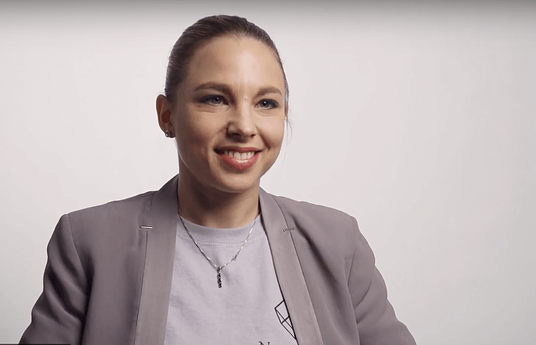HundrED Ambassador and former Head Teacher, Andi Price blogs his experience with using technology in the classroom and how it no longer is a special skill but a basic one when teaching students. In this article, he shares how the future of teaching can be changed with the help of digital feedback that leads to increasing pupil interaction and reducing teacher workload.
Two years ago, I returned to the classroom after 13 years as a Headteacher. It was a bold move which aligned to my love of learning and developing frustration that I was setting and advocating new, innovative learning strategies but not personally implementing them. Being a semi tech-geek, I had a particular interest in the radical changes around the use of technology in learning and had a huge desire to fully embed this into classroom practice with the view to ensure accelerated learning. I was excited to get back to the classroom, but one aspect of the job made me question my decision. Marking. Or filled me with dread?
The concept of ‘triple marking’ was emerging at the beginning of my career. This meant writing a response to a child’s piece of work, the child responding back and so on and so forth. I knew very early in my career that written feedback was going to be something leaders would highlight for me to improve on. Regular book scrutinies became something I dreaded, and although wrong, I’d regularly have to back mark books at weekends or half term to align to feedback policies and in effect keep myself out of trouble/employed. I understood how many teachers left the profession based on this overzealous ‘tick the box’ exercise. For me, it was more important my pupils were making progress (and they were considerable amounts) and loving learning through my teaching than my success in getting recognised for my immaculately presented feedback in their books.

As my career advanced, I analysed feedback more and more. I firmly believe on the spot, short regular snippets of guidance, encouragement and further inquiry tasks are significantly more beneficial than reams and reams of writing at the end of pupils' work. In the majority of cases, this feedback isn’t read, taken on board or delivers a positive impact. With so many other demands on teachers' time and more beneficial tasks pending, this is not a good use of time.
Unfortunately, teachers are still predominantly judged by their books and not by the progress their pupils make. Teachers who write extensive feedback and those who enforce immaculate books might not be the greatest teachers or leaders!
I can see both sides of the coin, however. Having been in senior leadership for many years I totally understand the trepidation and fear that exists in permitting teachers to feedback through digital platforms. This reluctance is exacerbated because of the accountability process which exists in education that we are all exposed to. So how can we meet in the middle? Less onerous feedback with an increased amount of progress evidence. Impossible right? Not at all. There is a feedback revolution taking place across the profession which might see the extinction of the green and pink highlighter in the classroom forever.
My focus as both a leader and class teacher for the last few years has been two-fold - how can we turn the real-time, purposeful, diagnostic feedback, given in class, to be accessible, purposeful referred back to time after time, especially within the current accountability process climate. And in doing so can we raise the quality of feedback. As Joe Kirby writes:
Digital Feedback - Getting Started
Choose your platform, there are many available and in time you may choose to use more than one. My platform of choice is Seesaw for ease of use, parental access and multiple feedback options. Hardware is simple; one tablet or a smartphone is sufficient to start. Uploading students' work is easy, just take pictures and load them. Seesaw has a simple procedure for setting up parental access and I have had 100% of parents in my classes use it (over the years it has been so successful that the whole school have adopted it as our one forms of communication). As a parent myself I love receiving notifications of what my daughter is working on, we have a better ‘what did you do at school today?’ conversations as I have visibility of some of her work and we can talk about it or around it, helping her to widen her understanding and engagement in the topic. I can also motivate and ask questions to her thus moving digital feedback out of only the classroom and into a wider learning environment. Parents feel involved and support the learning process in a range of different ways.
Once students work is uploaded, you can sort it into categories or folders (i.e. digital exercise books). Press a button and you can feedback on all your English work for example. Feedback can take three forms. I’ve worked through this on a linear process which I think has encouraged adoption, but every class and school is different.
Typed Feedback: Teachers and students type back their responses. Longer than writing in exercise books?! Not if you are commenting on the same misconception in the majority of work - copy, paste and adapt. I estimate that I saved around a third of the time I would have done by writing in exercise books.
Verbal feedback: Probably the scariest part. Would students respond? Was the feedback useful/challenging? Would SLT accept this type of feedback? Interestingly, this proved to be the most successful part of the journey with digital feedback. Student engagement improved 10-fold, SLT observed huge benefits and were witnessing considerable progress.
Because the feedback was accessible, it could be reviewed when needed and used for inspection purposes.
This success prompted change in the feedback policy across the whole school and encouraged other staff to try digital feedback. The whole project quickly snowballed as more teachers adopted it, seeing a better method of feeding back which benefitted pupils significantly as well as driving greater engagement, involving parents with their children’s work, praise and in some cases, using further in-depth questioning. The ability to shift some ‘marking time’ to other areas in the classroom was also highly welcomed!

Annotated Feedback: This was developed in conjunction with a few of my colleagues who saw the benefit of modelling methods where students had misconceptions in mathematics.
This approach to feedback has been recognised by inspectors as being revolutionary. They commented that the collaborative approach of educators, parents and peers having the ability to view work, comment upon and further question students increased learning dramatically.
Coupled with teachers’ workload reaching record levels, digital feedback is a win-win solution. Increased pupil learning and reduced teacher workload. We can revolutionise our approach and work smarter rather than harder.
Technology is moving at a radical pace all around us. Our profession must keep up with how stakeholders want to receive feedback and information. We have the hardware and the software is available. Digital feedback should be embraced and encouraged. Highly accessible, collaborative and workload reducing feedback processes need to become standard and commonplace. I am confident parents or students will not slow this adoption process down. It is for schools to continue to trust in practitioners to provide high-quality feedback but provide it in a range of engaging ways to drive greater involvement and progress.


